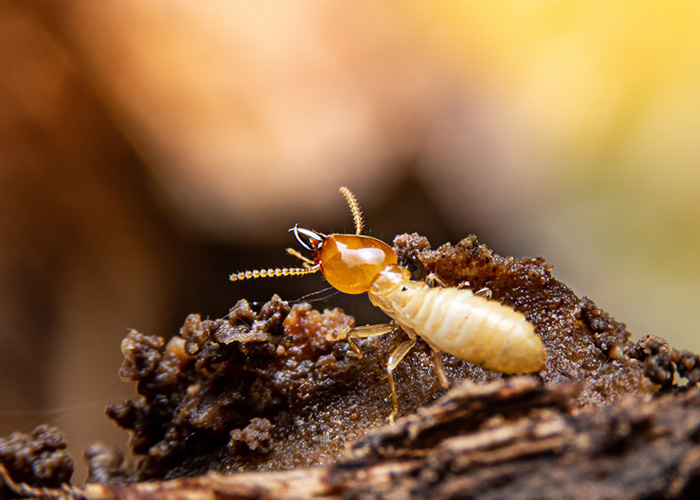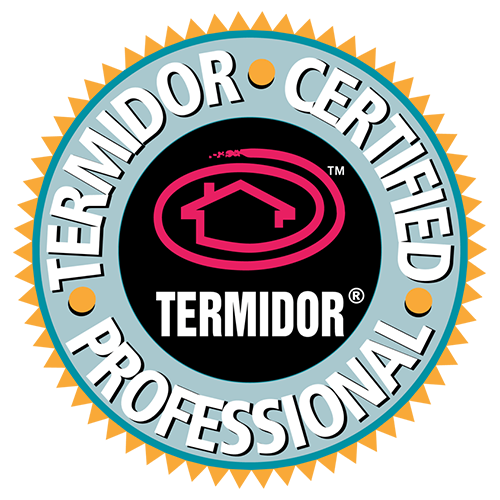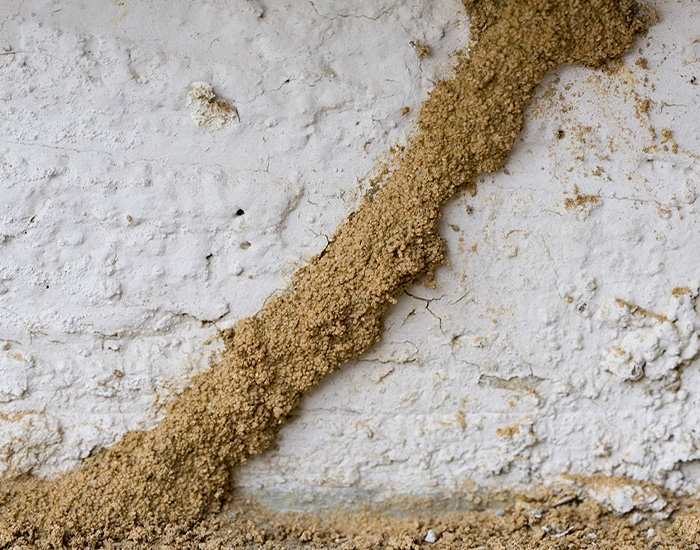TERMITE PEST CONTROL IN JACKSON MS
 Termites are a group of eusocial insects that, until recently, were classified at the taxonomic rank of order Isoptera (see taxonomy below), but are now accepted as the infraorder Isoptera, of the cockroach order Blattodea. While termites are commonly known, especially in Australia, as “white ants,” they are not closely related to the ants.
Termites are a group of eusocial insects that, until recently, were classified at the taxonomic rank of order Isoptera (see taxonomy below), but are now accepted as the infraorder Isoptera, of the cockroach order Blattodea. While termites are commonly known, especially in Australia, as “white ants,” they are not closely related to the ants.
Like ants, and some bees and wasps — all of which are placed in the separate order Hymenoptera — termites divide labor among castes, produce overlapping generations and take care of young collectively. Termites mostly feed on dead plant material, generally in the form of wood, leaf litter, soil, or animal dung, and about 10% of the estimated 4,000 species (about 3,106 taxonomically known) are economically significant as pests that can cause serious structural damage to buildings, crops or plantation forests. Termites are major detritivores, particularly in the subtropical and tropical regions, and their recycling of wood and other plant matter is of considerable ecological importance.
see also: Effectively Treat For Earwigs
Termites are extremely prevalent throughout Mississippi. The most common termite in Mississippi is the eastern subterranean termite which, in accordance with its name, lives in the soil. Subterranean termites are social insects, living in colonies that can number 300,000. A (mud tube) is often a sign of infestation, although these mud tubes are not always visible they can be hidden by walls, plumbing, cabinets, and other obstructions.
Liquid Treatments are the most common treatment approach. The liquid treatment is applied by trenching around the foundation of a home and (rodding) down into the soil where the subterranean termites live. The liquid products most commonly used are non-repellents, which were introduced over 15 years ago.
Should I purchase Termite Control if there’s no evidence of a current infestation?
In today’s real estate market, asset protection is a necessity. Preventive termite programs can resolve hidden infestations and prevent future problems including damage and repair costs, not covered by your homeowners insurance. The pre-treatment done on your home, when it was built, will only last for 3-5 years if done correctly.
How do I know if I have termites?
Termites live in underground colonies, tunneling undetected through the soil into the structure. Because of their subterranean nature, an infestation may go undetected for some time. There are warning signs of an active termite infestation, including:
- Winged insects are called “swarmers” in or around the home or winged parts scattered around your doors or windows. This usually occurs in the spring, before temps get above 85°.
- Mud tubes leading from the ground to a piece of infested wood, up foundation walls, or even breaking through your sheetrock, baseboards, or window trim.
- Any previous damage to your home from moisture will increase the odds of getting some form of damage
Our slab home or walk under crawl space treatment is an effective barrier defense around your home, using a state-of-the-art, non-repellent termiticide called Termidor® that actually kills the termites rather than just move them to another area. We also offer the best guarantees in the area and do our best to leave your home looking as good as it did before we began the treatment. On average MS has 1-3 termite colonies per acre.
- We carefully select our termite control technology based on uncompromising standards of efficiency and safety.
- We do our best to cultivate longstanding relationships with our customers based on quality and satisfaction. Much of our business comes from customer referrals.
- We combine professional skills and customer care to deliver high-value, responsive service.
- We provide a tightly-knit, highly trained termite team that is dependable and results-oriented.

Get Credible Termite Control Services
Termidor, through its advertising, is one of the more recognizable non-repellent brands. These non-repellents have been a game-changer for termite control. In the past, the products used were repellents. The challenge with repellents was that it was impossible to create a full barrier under a home where different cracks and crevices were present. In addition, the termites would be repelled and simply go to where there was no repellency to enter a home. This made control incredibly difficult. With non-repellents, the termites cannot detect that the product is there.
Since termites are social insects they get the product on themselves and transfer the product to other members of the colony, ultimately taking care of the entire colony.


